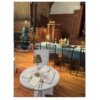Barons of Broadway #30
The house at 311 North Broadway in Upper Nyack captures one of the longest slices of Nyack history. From the indigenous artifacts found on the property to battles with the British during the Revolutionary War and into the twentieth century, the Sarvent farm stood firm. The stone foundation of the current house is among the oldest in the Nyacks.

The Sarvent family included a Dutch immigrant, quarry owners, Revolutionary War veterans, slaveholders, a ship carpenter, vineyard owners, and Upper Nyack’s first mayor. Over the 19th century, their land was subdivided, later housing several of the “Barons of Broadway” and the store memorialized in an Edward Hopper painting.
Philip Sarvent & Early Settlement
Philip Sarvent (also spelled Servis, Sarvant, Zerbe), born in 1721, immigrated to America from Holland in 1734. At just 13, he worked as a laborer on Cornelius Kuyper’s farm, which covered all of today’s Upper Nyack—some 640 acres. After 13 years of employment, Sarvent purchased the southernmost 70 acres from the Kuyper heirs in 1747. His land straddled Highmount Avenue stretching from the Hudson River to Route 9W.

Philip married Maria Onderdonk, a Queens native of Dutch heritage. The Onderdonk family name is well-known in early Rockland County history. Over 25 years, they had six children. Four sons—Philip Jr., Adrian, Abraham, and Garret—worked on the farm, with Garret eventually inheriting it. Philip died in 1786 and is buried in Upper Nyack’s Old Palmer Burial Ground, where Cornelius Kuyper is also interred. His grave bears an American flag in recognition of his service during the Revolutionary War.
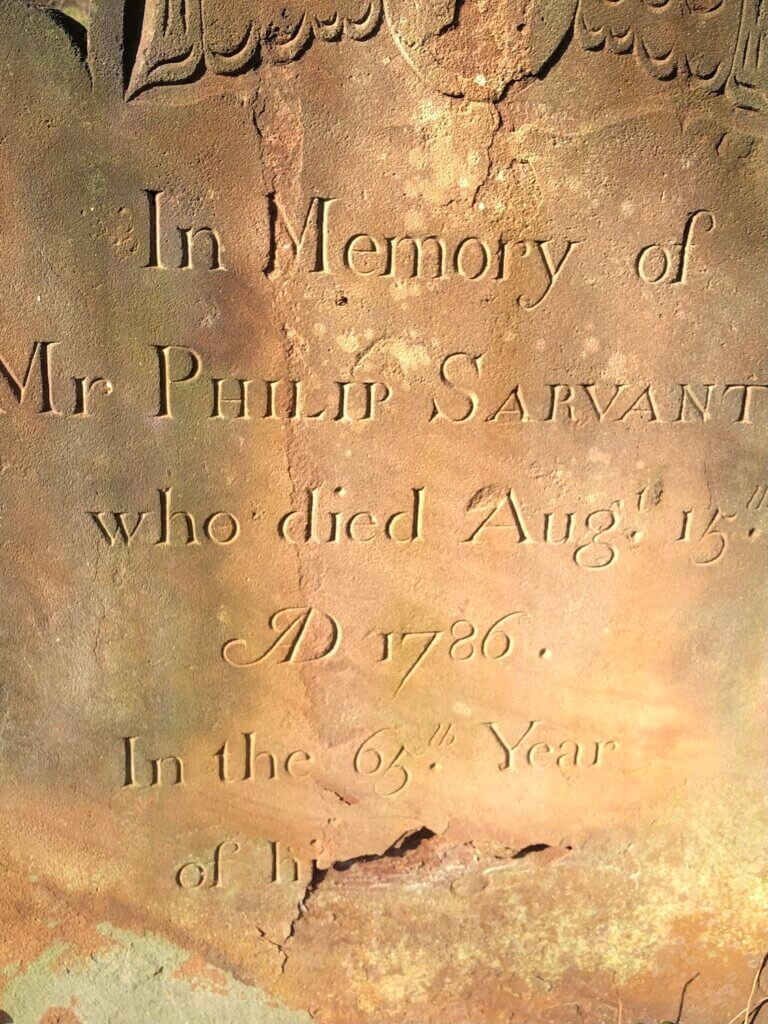
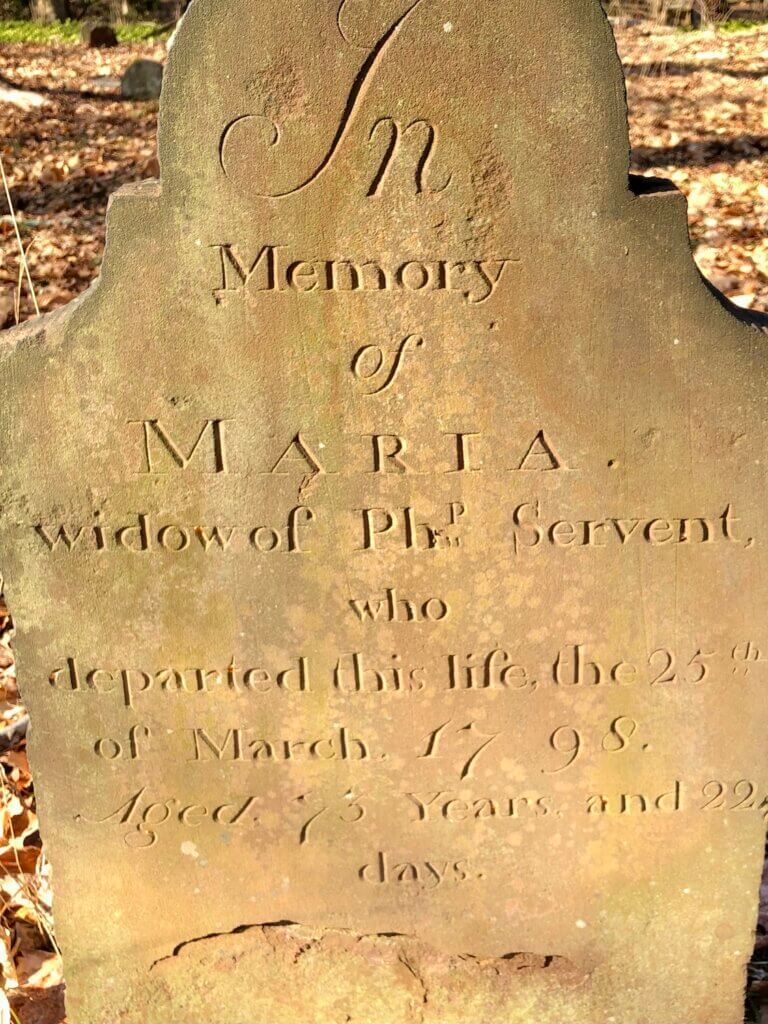
The tombstones of Philip Sarvent and Maria Onderdonk Sarvent in the Old Palmer Burial Grounds.
The British Attacks on Nyack
While controlling the Hudson River in the early years of the Revolutionary War, the British especially despised Nyack for two reasons. First, most villagers supported the colonial cause, as demonstrated by their signing of the Orangetown Resolutions on July 4, 1774—one year before the Declaration of Independence. Interestingly, Philip Sarvent did not sign. Second, the British sought revenge against Henry Palmer, a wealthy trader who smuggled arms to the colonials and later moved to Nyack.
The British frequently targeted the Nyack’s ten homes with cannon fire. The Third Regiment of the Orange County Militia, under Colonel Ann Hawkes Hay, patrolled the western shoreline. Local defenders included Major John Smith, Captain Aury Smith, Cornelius Cuyper Jr., Henry Palmer, and the Sarvents.
In both 1776 and 1777, the British launched raids. In one instance, they seized Michael Cornelison of South Nyack, imprisoning him in the infamous Sugar House prison. After multiple failed attempts, the British finally burned down Major John Smith’s home.

Sarvent Hides His Grandfather Clock
Fearing British looters, Philip Sarvent hid his prized six-foot-tall oak clock with a brass face, purchased in 1755. He buried it beneath a barn at Pye’s farm in West Nyack, where it remained for seven years. Another article states that the clock was not uncovered until decades later after Philip’s death when family members stumbled upon an old note detailing its location.
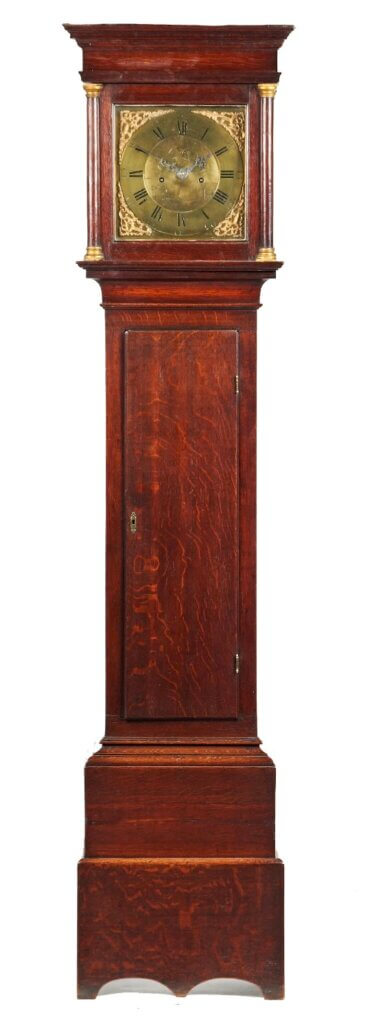
For generations, the Sarvent home stored wartime relics, including swords, flintlocks, cannonballs, and links from the Hudson River chain used to block British ships near West Point. In 1900, Garret Sarvent willed the clock to his son Charles. A family dispute nearly ensued, but a lawyer warned that a lawsuit would deplete the estate’s funds.
Skirmishes at Sarvent’s Landing
In October 1776, British ships anchored off Tarrytown and attempted a Nyack landing but were repelled by the Shore Guard. However, they did fire cannonballs at Philip Sarvent’s house. In December, the British successfully raided the area, stealing cattle.
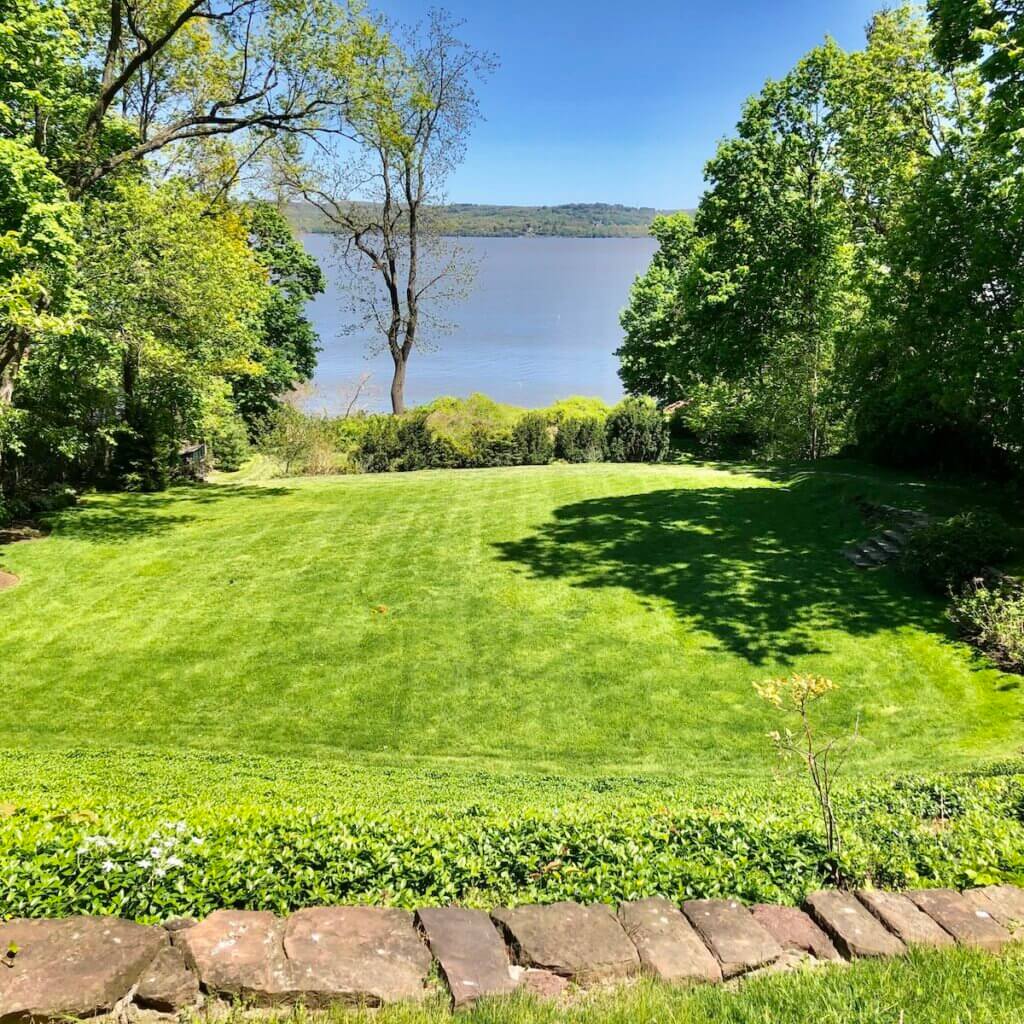
In 1777, two British row-galleys attempted to steal Abram Sarvent’s sloop moored at Sarvent Landing. Adrian Sarvent, Cornelius Kuyper, Peter Freeland, Henry Palmer, and Major Smith ambushed them from behind a berm. Their musket fire forced the British to retreat. In retaliation, the fleet bombarded Nyack with six-pound cannonballs. One landed near Henry Palmer’s house, forcing his wife to flee with a child in her arms. For years, locals found and sold lead cannonballs from the skirmish.
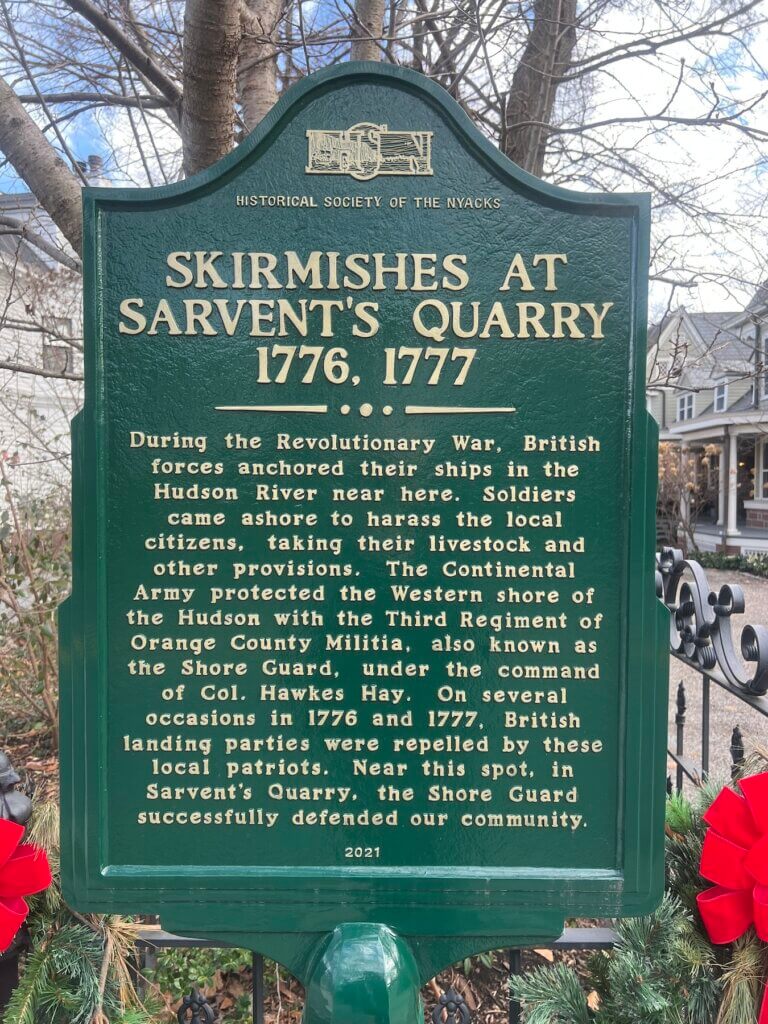
The Sarvent Sandstone Quarry
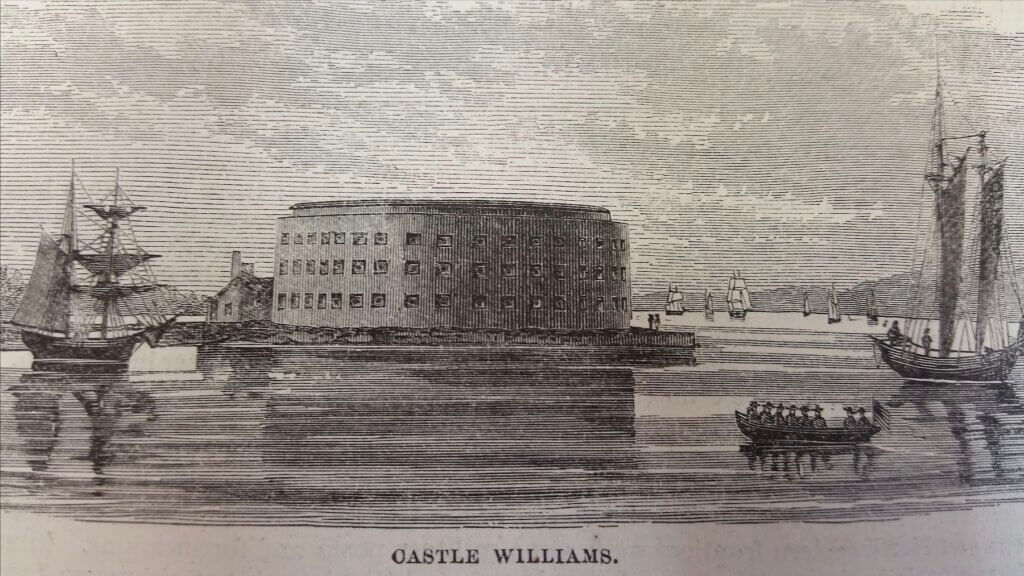
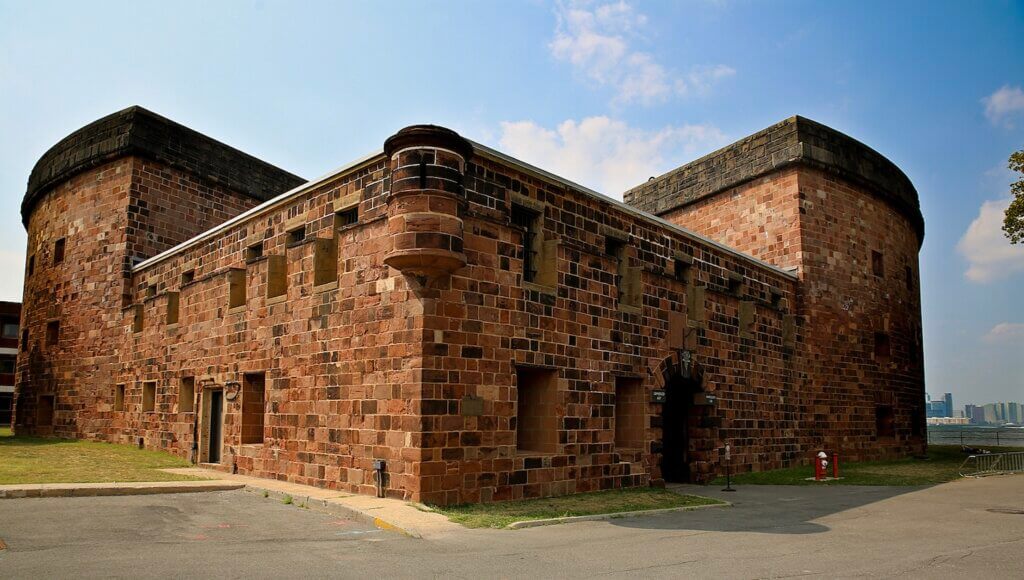
Between the house and the Hudson River, the Sarvent quarry played a role in Nyack’s thriving sandstone industry. Quarrying, Nyack’s largest industry post-Revolution, provided stone for local and New York City buildings. Fort William on Governor’s Island that still stands contains Nyack stone. At the industries local apex, 31 quarries populated the shoreline. Workers, including enslaved laborers, cut and loaded the stone onto sloops bound for New York City. By 1830, competition from New Jersey’s higher-quality sandstone led to the industry’s decline.
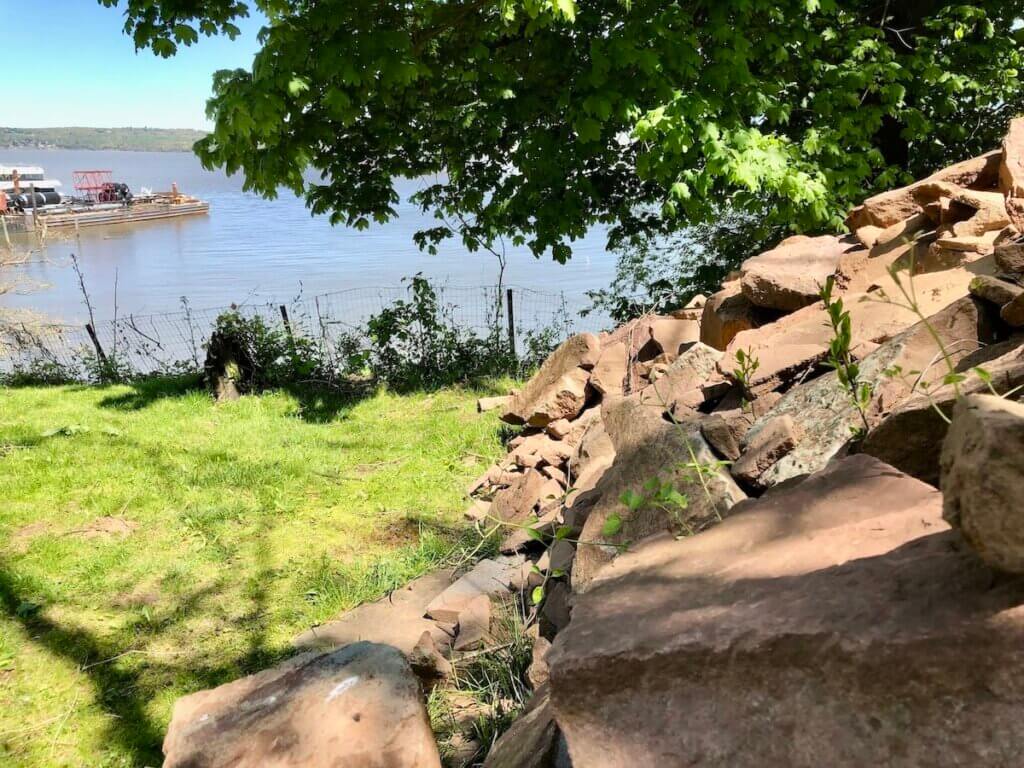
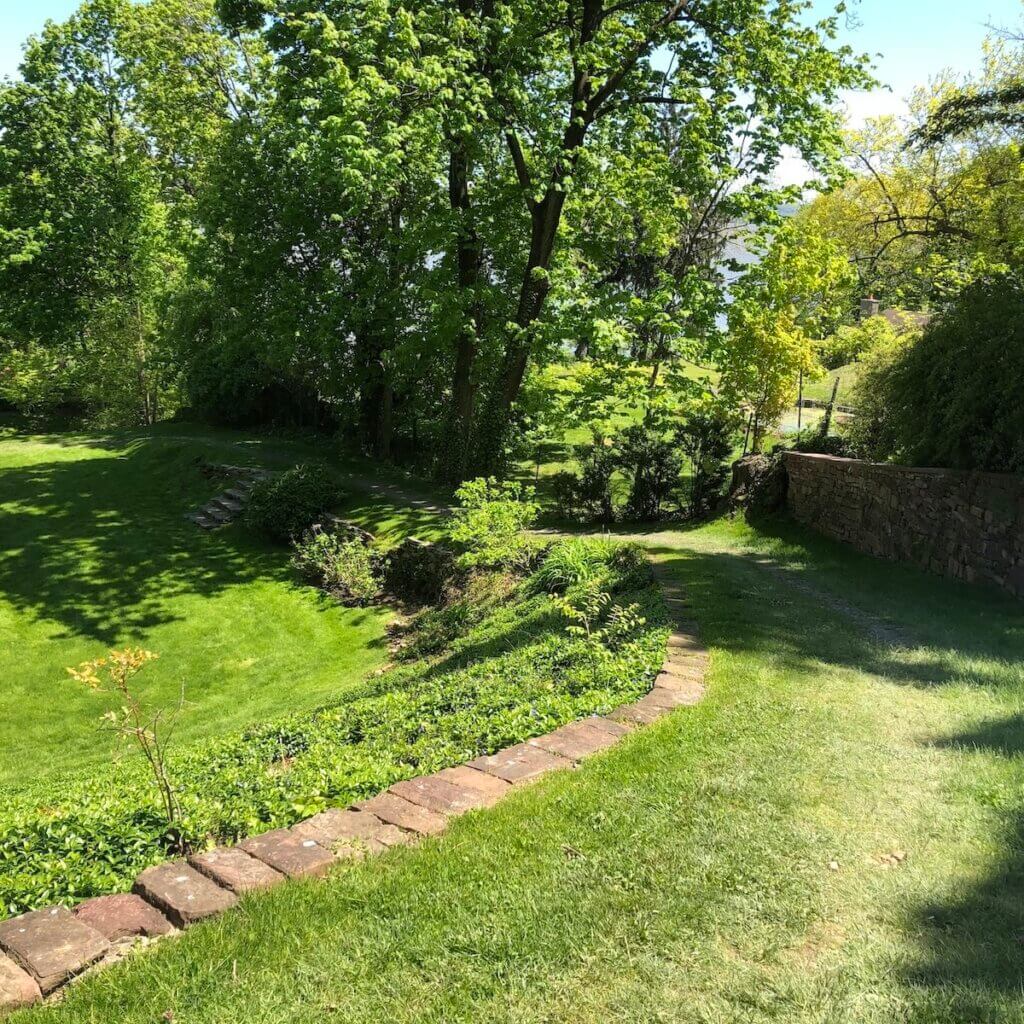
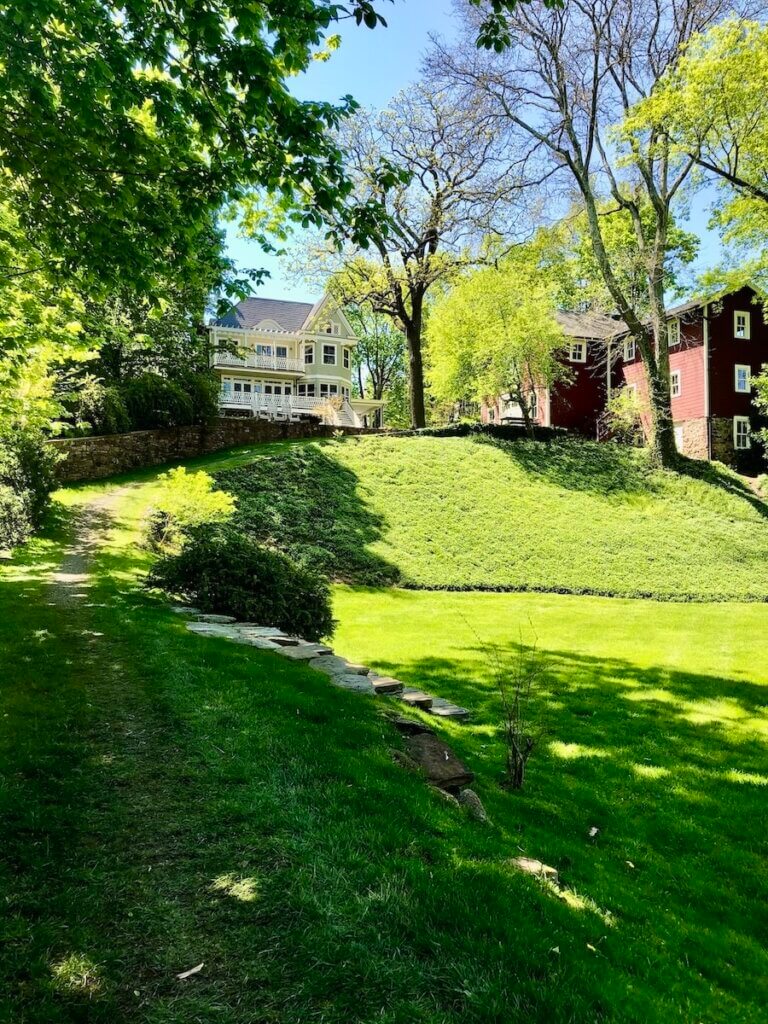
Sarvent’s Old Stone House
Early Dutch settlers in Nyack built homes using locally quarried stone. One obituary suggests that Philip purchased an existing stone house with the property, making it one of Upper Nyack’s earliest Dutch settlements. The chimney bricks came from Holland, and records describe the home as a “low, Dutch-style stone house.” Like many Nyack farms at the time, the Sarvents had a small river landing and at least one sloop for transportation.
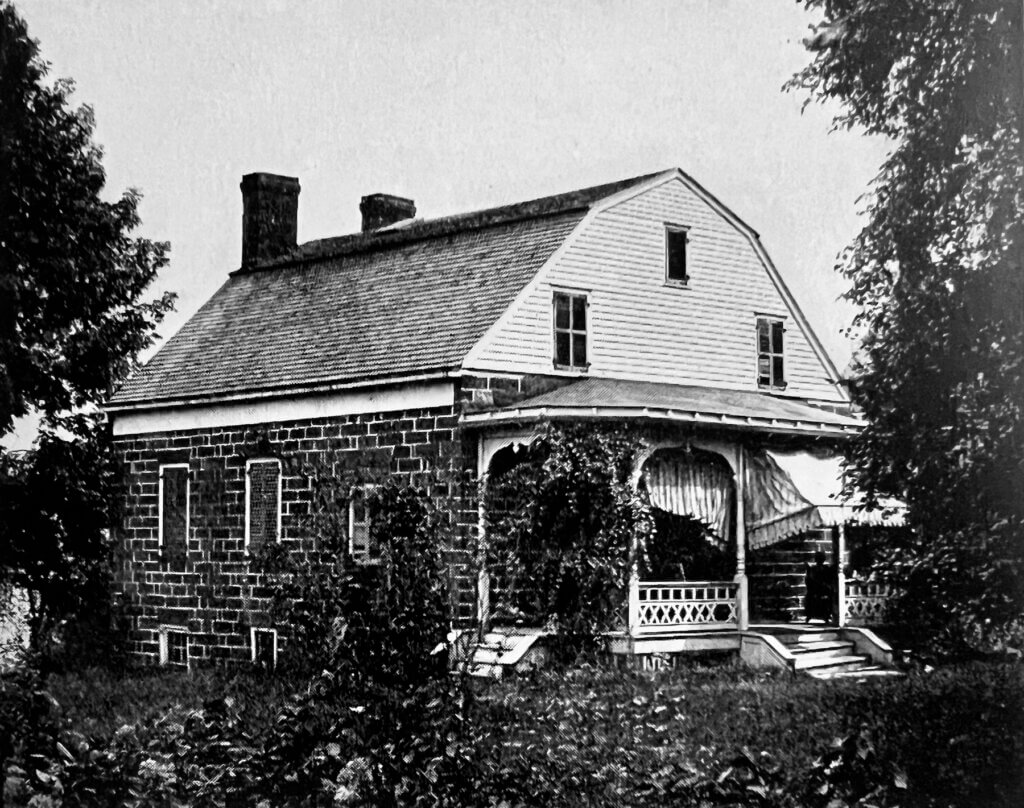
Philip deeded the farm to his sons Philip (II), Adrian, and Garret in 1773. In 1799, two of the brothers transferred their shares to Garret, consolidating ownership.
Garret Sarvent & His Legacy
Garret Sarvent, the youngest of Philip’s three sons, inherited and managed the farm for his entire life. In 1818, he built a new house 100 feet closer to North Broadway, using stone from the original structure and sandstone from the family’s quarry. While renovated and expanded over time, the foundation of this house is arguably the oldest in the Nyacks.
The 1800 census records Garret as owning five enslaved people, an unusually high number for the area. Similar practices existed in Upper Nyack, where enslaved laborers helped construct the Old Stone Meeting House. Garret married Mary “Polly” Corwin in 1838. Though the number of their children remains uncertain, their son Garret Gilbert Sarvent is known. Garret died in 1835.
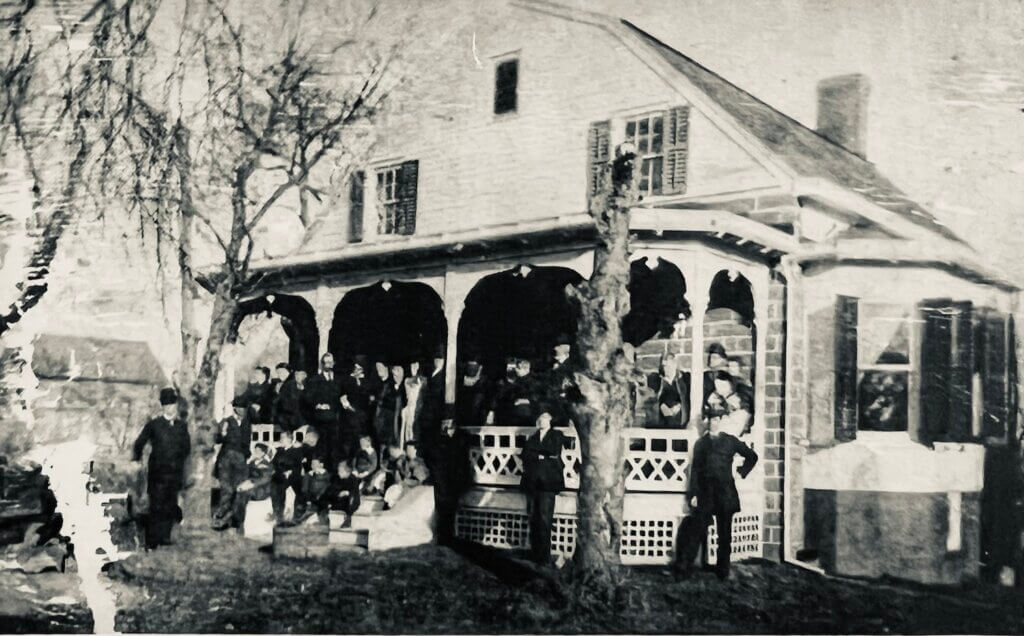
Garret Gilbert Sarvent: A Horace Greeley Look-Alike
Garret Gilbert Sarvent spent his entire life in the Sarvent family home that he inherited from his father also named Garret. Born in 1812, he married Sarah Snedeker, who grew up on a farm in Upper Nyack. The couple had three sons—Garret, Erastus, and Charles—and three daughters. Garret outlived his wife, all but one son, and two daughters. After his death, his son Charles inherited the family home and the treasured grandfather clock.
Garret worked as both a farmer and a ship carpenter. Many said he bore a strong physical and intellectual resemblance to his acquaintance, Horace Greeley, though their political views often clashed. Greeley, a prominent New York City newspaper publisher, orator, and a leader in the emerging Republican Party, spoke at the Nyack Wigwam in September 1868.
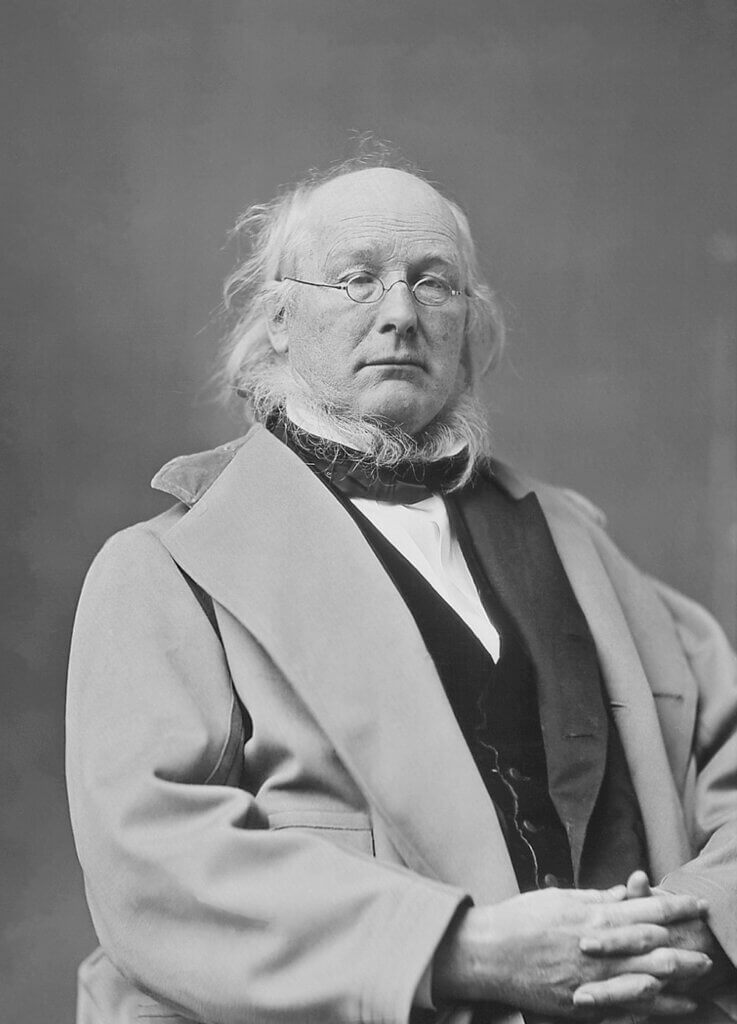
The Sarvent Vineyard & Raspberry Plot
Garret cultivated small fruits and grapes on his farm, contributing to Nyack’s thriving grape industry during the Civil War era. He maintained four vineyards, with his highest-yielding grapes, planted in 1856, growing just west of his house on North Broadway. Another vineyard stretched south of the house and east of Broadway, while two additional plots to the north contained 385 and 275 vines, respectively.
During the offseason, Garret pruned his vines heavily but left the leaves intact during growth. He also planted potatoes between the rows, plowing them under after harvest to create natural compost. In total, he managed about 1,500 vines. Additionally, he farmed two acres of raspberries, producing 5,500 baskets of fruit annually.

Garret’s brother Philip also cultivated grapes on his property just north of Garret’s land, continuing the family’s agricultural tradition. As grape farming flourished, Nyack gained a reputation for producing high-quality fruit, supplying both local markets and New York City.
Garret Sarvent, Upper Nyack’s First Mayor
In 1862, Garret began his political career as Town Assessor, serving two terms. His leadership in local politics eventually led Upper Nyack landowners to form their own village in 1872. Garret argued that incorporating Nyack as a single entity would unfairly burden Upper Nyack landowners, as taxes would be assessed based on acreage yet spent primarily on developing downtown Nyack.
After Upper Nyack successfully incorporated, Garret became its first Village President, a position he held for 18 years. Under his leadership, he persuaded the Union Steamboat Company in 1874 and the Pacific Mail Steamboat Company in 1880 to establish offices in Upper Nyack. He also served as a trustee for the new Upper Nyack School, which was built on former Sarvent land.
Sarvent Fights the Tweed Gang
In 1871, Garret led the opposition against a controversial road project known as “The Boulevard,” backed by New York City’s infamous Tweed gang. The plan aimed to build a hotel on Hook Mountain, with guests arriving by boat or by coach via a newly constructed road extending from New Jersey. The project called for expanding Midland Avenue and Highland Avenue (now Route 9W).
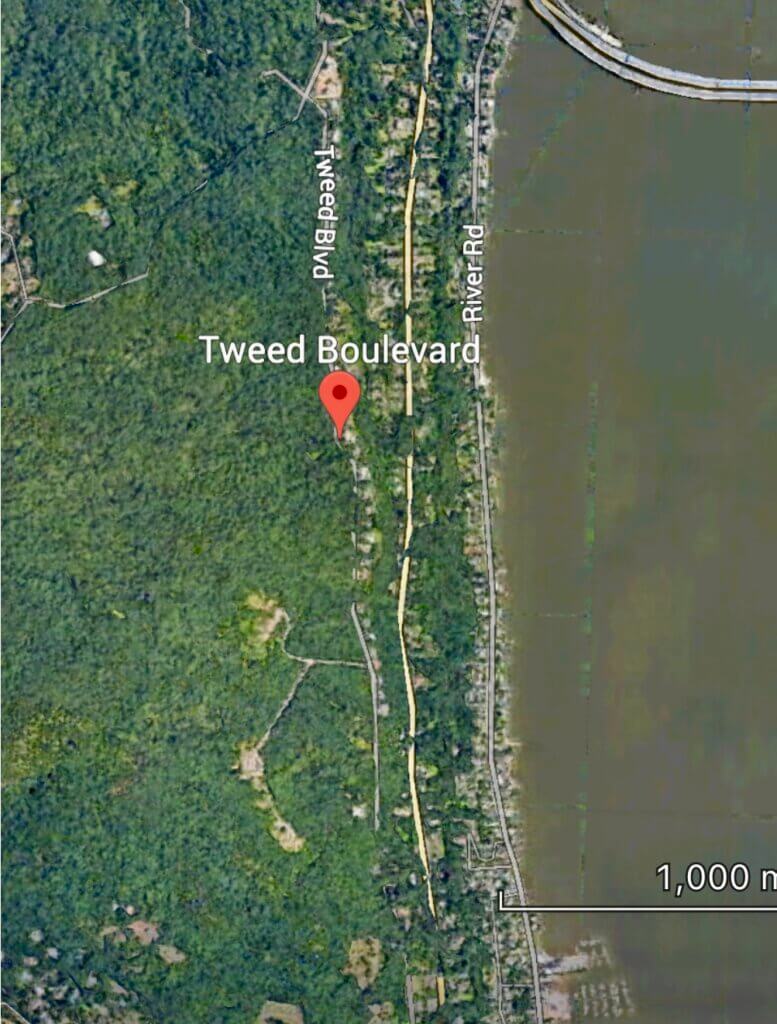
Locals strongly opposed the plan, which forced property owners to bear the cost of road construction. The scheme, championed by local Assemblyman James Nelson, enraged landowners, including Garret. He rallied a coalition to fight the plan and traveled to Albany to present their case. Their most significant victory came in 1872 when Garret, a Democrat, helped organize a successful effort to unseat Nelson—the same year Boss Tweed fell from power. Despite opposition, portions of North Midland and North Highland Avenue still follow the roadbed created in the early 1870s.
Sarvent’s Visionary Park
In 1900, Garret partnered with the Townsend brothers to propose a public park along Midland Avenue, spanning the border between Nyack and Upper Nyack. They envisioned a 10-acre park with a lake, a groomed forest, and walking trails, funded under “easy” terms by both villages.Unfortunately, Garret passed away in 1901, and his vision for the park faded with him.
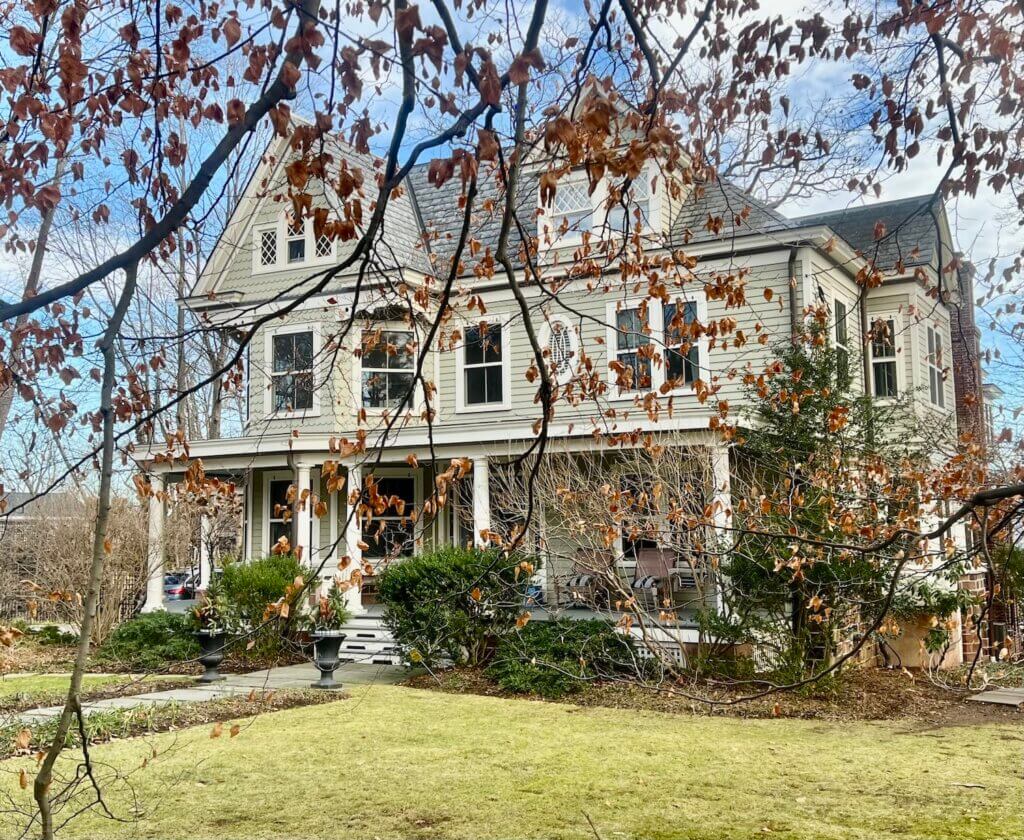
Carving Up the Farm
As grape farming declined, Garret transitioned into real estate, selling much of his land over time. While most of Van Houten’s Landing (Upper Nyack’s shipyard) was originally part of the Knapp farm, a neighboring shipyard owned by John Felter in 1847, occupied Sarvent land.
The Sarvent property saw extensive development. Highmount Avenue’s Pomeroy estate, James P. Voris’s house, Colonel Richard Vose’s property, Charles Fellows house at 314 North Broadway, and the Bennett and Edward DeNoyelles estates all emerged on former Sarvent land. The family continued selling parcels into the 20th century, with the last recorded sale occurring in 1937.
New Owners
In1950, well-known economist William Diebold occupied the house with his family until 2002. Then, new owners renovated the house to its present form. The north facing wall was extended with new sandstone blocks. New details added include an “eyebrow” window near the ceiling in one of the eight bedrooms, a circular foyer at the east end of the hallway, and next to the wide-curving stairway, a large 19th-century wrought-iron heating grate.
Sarvent Family Legacy
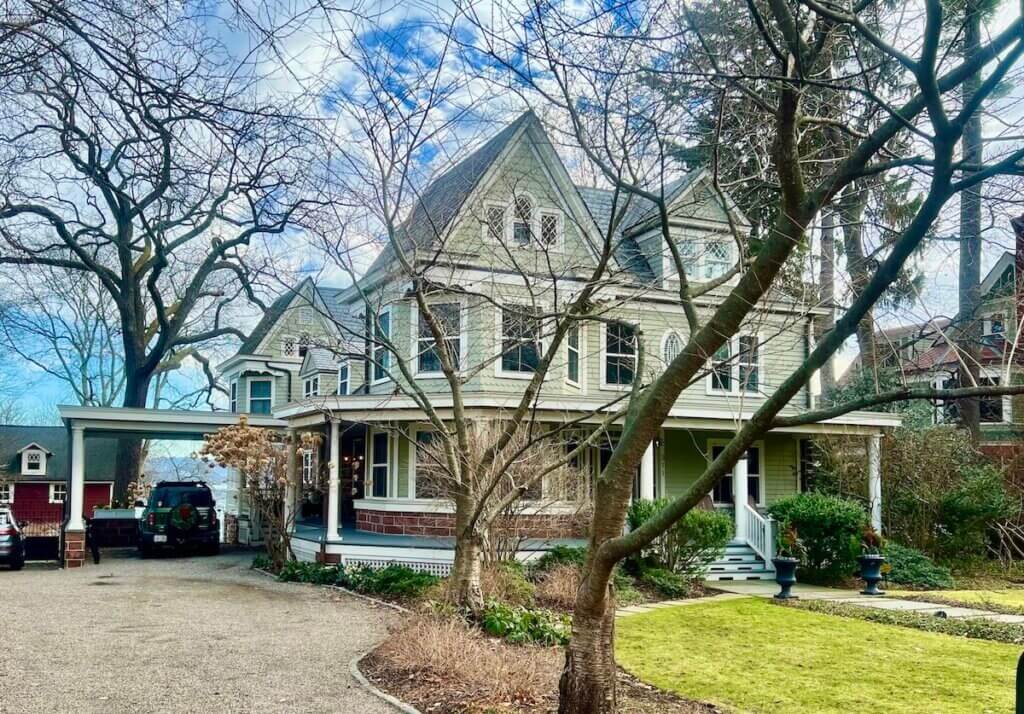
By 1905, after 168 years of ownership, the Sarvent family left their historic farm. However, their legacy endures through the landmarks and institutions that now stand on their former land. The 1818 Sarvent house, with its numerous renovations including its current elaborate Victorian design, remains a symbol of the family’s resilience and influence in shaping Upper Nyack.
Mike Hays lived in the Nyacks for 38-years. He worked for McGraw-Hill Education in New York City for many years. Hays serves as President of the Historical Society of the Nyacks, Vice-President of the Edward Hopper House Museum & Study Center, and Upper Nyack Historian. . Married to Bernie Richey, he enjoys cycling and winters in Florida. You can follow him on Instagram as UpperNyackMike.
Editor’s note: This article is sponsored by Sun River Health and Ellis Sotheby’s International Realty. Sun River Health is a network of 43 Federally Qualified Health Centers (FQHCs) providing primary, dental, pediatric, OB-GYN, and behavioral health care to over 245,000 patients annually. Ellis Sotheby’s International Realty is the lower Hudson Valley’s Leader in Luxury. Located in the charming Hudson River village of Nyack, approximately 22 miles from New York City. Our agents are passionate about listing and selling extraordinary properties in the Lower Hudson Valley, including Rockland and Orange Counties, New York.







